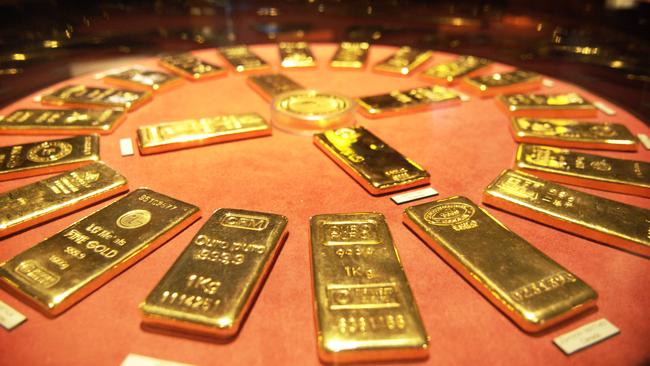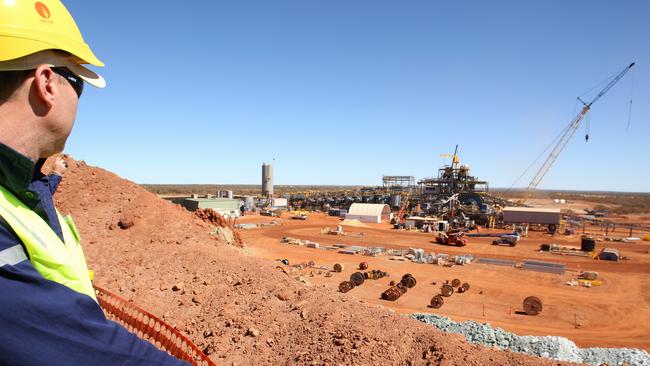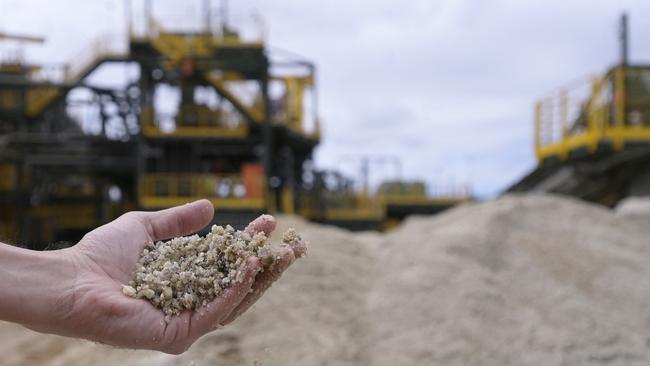Gold shines as investors tally up mining’s EOFY winners and losers
The search for value in the mid-tier mining sector was dominated by the resurgence of gold and the fall from grace of the critical minerals sector.

BHP’s failed bid for Anglo American dominated attention in the second half of the 2024 financial year, but the search for value in the mid-tier mining sector was dominated by the resurgence of gold and the fall from grace of the critical minerals sector.
With one exception at the top of the list, gold companies delivered the best returns for the full financial year within the mid-cap resources sector, with seven of the top 10 total returns – including share price movements and dividends – on the S&P/ASX 300 Metals and Mining index coming from gold miners.
The copper price recovery helped Sandfire Resources return to grace, as the last major pure play miner of the commodity on the Australian bourse.
Sandfire shares ended the year on a slide though, alongside the copper price, closing on Friday at $8.73, 14 per cent below its annual high of $10.16 in May, when the copper price was also riding high at close to $US11,000 a tonne.

But, despite the late slip, Sandfire shares still delivered a total annual return of close to 48 per cent for the financial year.
Stanmore Resources’ acquisition of BHP’s unwanted BMC coal assets in Queensland helped the company to become one of the other exceptions, with the transformation of the scale of the miner’s business putting it in eighth spot for the fiscal year, with dividend payments helping it to a 46 per cent total return.
But, despite dire circumstances elsewhere in the sector, junior lithium play Wildcat Resources topped the best 10 performers, with a 162.5 per cent total return.
Even so, with a 31.5c close on Friday, Wildcat is a long way off its $1.01 peak in November at the height of the lithium land grab that saw Gina Rinehart’s Hancock Prospecting, Chris Ellison’s Mineral Resources and global majors SQM and Albemarle put billions of dollars on the table for lithium explorers as the price of the battery metal plunged.
But it was gold that delivered the best returns for mid-tier mining investors for the financial year, as soaring global inflation rates and geopolitical uncertainty helped the price of the precious metal surge.
The S&P All Ordinaries gold index hit a low of 6023.1 in early October 2023, and a high of 8153.4 in late May – an extraordinary 33 per cent gap – before softening late in the financial year to close at 7357.
The best returns of the year on the S&P/ASX 300 Metals and Mining index came from West Australian miner Red 5, which delivered an 89.5 per cent total return for the financial year despite a sharp fall in its share price from highs of 49.5c in mid-May to a 36c close on Friday.
West African Resources was in second spot, with an 86.1 per cent return as the Burkina Faso gold miner closes in on the start of production from its second gold mine in the country.
And Morgan Hart’s Emerald Resources continued its strong run after turning its Okvau gold mine in Cambodia into a reliable production hub, worth about 100,000 ounces a year, and finally completed a long-running takeover of WA explorer Bullseye Mining, adding a high-grade Australian project to its development options.
Emerald delivered a total return of 86 per cent for the financial year, followed by the two companies competing to emerge as WA’s next major mid-tier gold play – Westgold Resources and Ramelius Resources, which delivered 68.7 per cent and 54.7 per cent returns respectively.

And Africa-focused Perseus Mining added to its reputation as one of the Australian gold sector’s most reliable producers, gaining 45.3 per cent on a total return basis.
But while the political hype around critical minerals shows now sign of diminishing, the shine has long gone from commodity prices and the ASX-listed stocks that jumped on board the green metal wagon. Any Core Lithium shareholders looking to indulge in a little tax-loss selling to offset taxable gains elsewhere in their portfolio will have been well-placed last week, with the company – the first major Australian victim of the lithium price plunge – finishing the year down 89.7 per cent, the biggest loss on the S&P/ASX 300 Metals and Mining index.
Investors who jumped on the Canadian lithium bandwagon have also had a torrid time, with Sayona Mining and Patriot Battery Metals down 79 per cent and 67.5 per cent respectively.
Chalice Mining was the third biggest loser on the list, with a 77.3 per cent plunge for the fiscal year after delivering an underwhelming scoping study on its Gonneville project in WA in August last year.
IGO was hit by falling lithium and nickel prices – while still feeling the hangover from its disastrous takeover of Western Areas – and suffered a 60.6 per cent value loss for the year.
Graphite plays Talga Group, Syrah Resources and Renascor Resources all made the top 10 loser list.
The list is rounded out by Liontown Resources, which was the hottest lithium play on the market when Albemarle lobbed a $2.50-a-share bid in March 2023.
Hancock Prospecting spoiled that takeover, however, and the falling lithium price – as well as cost blowouts at its Kathleen Valley project in WA – did the rest, with Liontown stock closing off 68 per cent for the financial year at 90.5c.




To join the conversation, please log in. Don't have an account? Register
Join the conversation, you are commenting as Logout